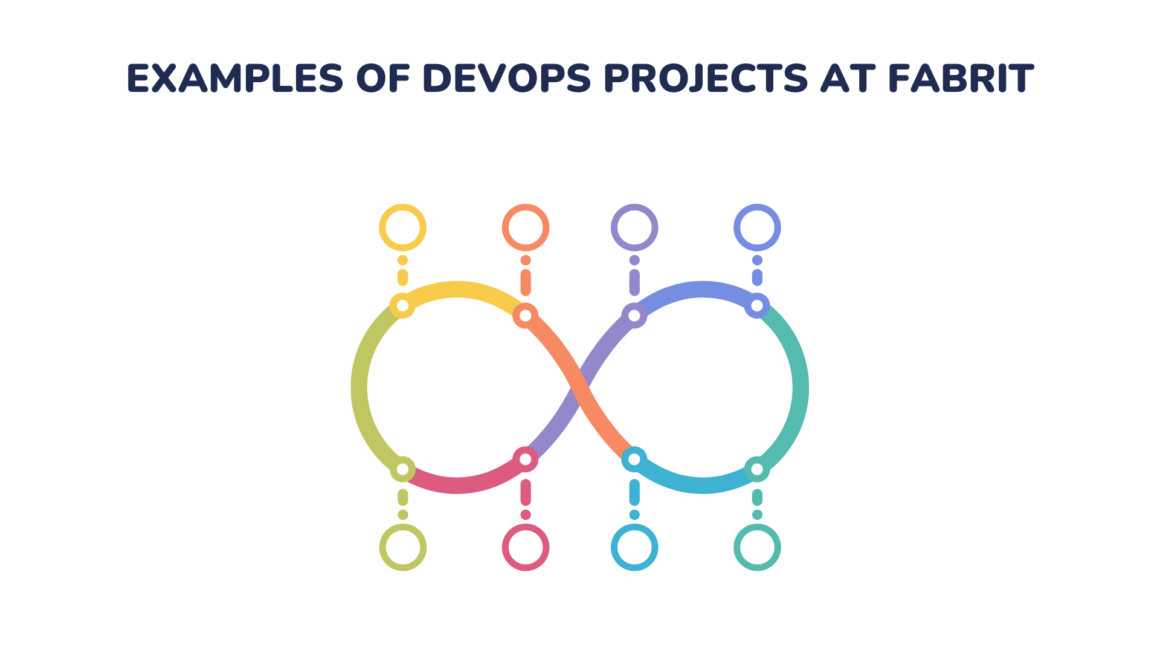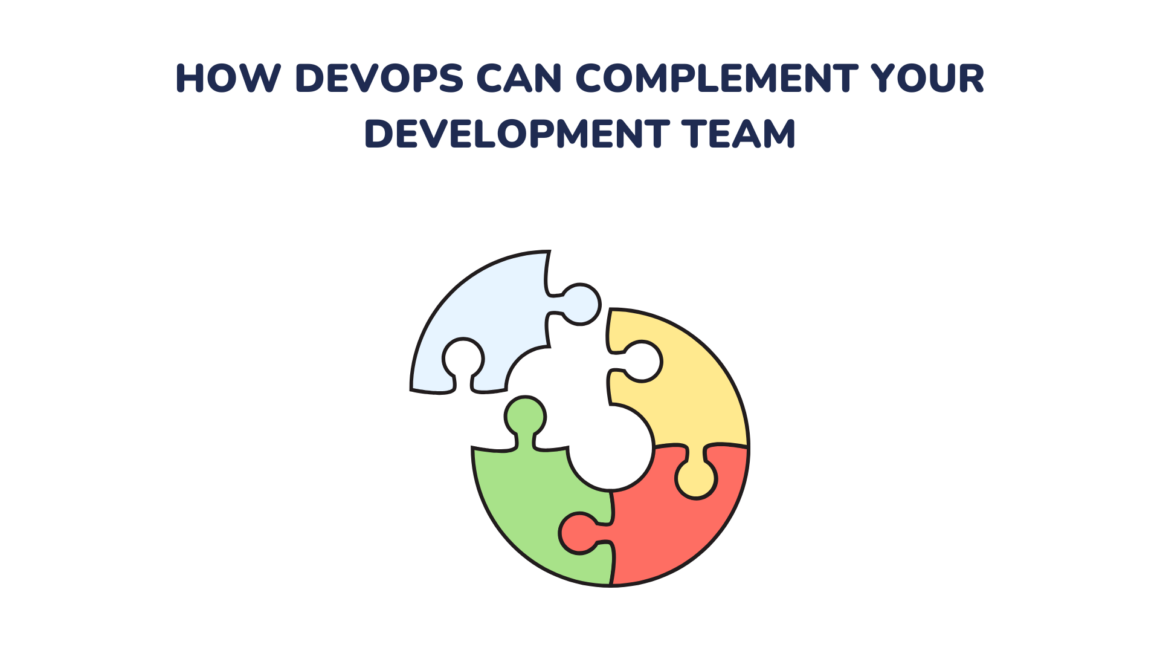Businesses in all sectors have made digital transformation a major priority, and DevOps has emerged as a vital strategy for attaining this objective. This article will examine DevOps real-life examples and how the application of the methodology affects the outcomes of those projects.
The applicability of DevOps is best seen in new projects started from scratch. The team and the client get used to automation concepts from the early beginning and the development flow is faster and less prone to human errors.
One of the major outcomes of implementing DevOps consists of a set of connected practices, such as continuous integration and continuous deployment pipelines, that minimizes human intervention in building quality-driven software and fastly delivering applications to customers.
Together with a cloud-first approach that simplifies the infrastructure provisioning, we are creating a recipe for success for any new project. We’re taking advantage of infrastructure as code (IoC) tools to reduce risk and cost and give our clients the option of migrating the entire project to other locations in just hours.
By using CI/CD we’re implementing automation and monitoring through the application’s lifecycle. This approach has proved to be successful in quickly identifying problems and bugs since the incipient phases of development.

Are all projects DevOps compatible?
Assessing whether an organization is DevOps compatible depends on its practices and in-place software delivery methodology.
DevOps practices aim to increase an organization’s value and team’s performance, providing a structural change in how software it’s delivered.
In order to evaluate whether an organization is DevOps compatible, we need to take into consideration its organization maturity which highly depends on its people and culture, process and practices, as well as its tools and technology stack. Therefore, when an organization is aiming toward implementing DevOps, all these facts should be taken into consideration.
Here at Fabrit, we’re committed to best practices focusing on quality-driven software development and embracing automation in the delivery process.
We’re fully taking advantage of the benefits of sprints, allowing us to manage projects of a high degree of complexity, as well as facing changes in demands and requirements. By splitting the work volume into smaller chunks we’re constantly improving the product by easily identifying the bugs and we’re able to easily roll out an update or change if it affects the system, as well as easily keeping track of customers’ last-minute demands.
As our team developed and provided secure and scalable software for a wide range of clients, from fintech to cybersecurity, we’ve concluded that sprints are not only about detecting technical issues. It is more than just adapting to last-minute changes and demands. It is more than delivering speed, but rather, as John Zeratsky states in his book Sprint and Make Time, “It’s also about gaining momentum, focus and confidence”. To this, we can also add that flawless team cooperation and seamless implementation of automation and agile practices, give us reliability and sustainability in designing custom software solutions.
Using automation and building reliable CI/CD pipelines to deliver container-based applications has provided us with a reliable recipe for the sustainable delivery of tailor-made software products.
However, considering all the advantages, there are certain reasons why an organization might be reluctant to change. Therefore implementing DevOps might not be the most suitable solution in their case. Such cases are often found in organizations that find themselves in the following scenarios:
- There are no regular releases
- Satisfaction with the current state of the software
- Highly regulated industry
- Legacy architecture and processes
Are you ready to upgrade your business process by harnessing the power of DevOps?
A change is needed when the organisation’s environment itself demands it. For the organisations that have found themselves in the scenarios described above, following a DevOps approach might lead to unforeseen issues, as well as difficulties that do not compensate for the advantages that come with implementing DevOps.
However, to take the right course of action, a technology audit could be performed to assess the actual state of the internal software systems and the necessity and feasibility to adopt new DevOps practices.

Examples of DevOps Projects at Fabrit
Bravo and Brave – the first music theory search engine is a creative tool for productive musicians. Users can search and listen to music using a variety of tags, genres, BPM, keys, and more. They can also import tracks and access musical models to further speed up their creative process, by exporting files in different formats.
We used the DevOps method in the architecture of this project, by organizing microservices. The DevOps team used Azure to create the resources, configure and create separate environments and deploy them.
What’s Running – Indoor interactive leisure park software – a market-leading project that gamifies leisure parks. The system digitizes everything from climbing walls, slacklines, trampolines, etc. and creates a system where the client avatar can earn skills and experience. The avatar can use the XP to level up and participate in missions and new challenges among other players.
We used DevOps to create connections and integrations between different parts of the whole system. By leveraging efficient tools, automating tedious manual processes, and continuous testing and integration, the DevOps team increased stability, and productivity and iteratively improved product quality.
Haefeli & Schroeder Financial Lines Ltd is an independent insurance broker company specialising in Financial Lines. The company decided to develop a new product that will bridge the gap between business Insurers & Brokers through a digital system. This will enable them to make the transition from classic paperwork to digitalisation. Through this platform, the insurers can create D&Os, Cyber, and PTLs while the brokers can use the data to create insurance policies for their clients.
By using CI/CD best practices and leveraging the Azure Cloud’s compute and network capabilities, we’ve created a successful platform for the business insurance company. The aim was to help brokers be more efficient and manage their clients quicker and more accessible by centralising and digitising data.
For more DevOps examples, you can check out our portfolio.

How DevOps Can Complement Your Development Team
DevOps can be used to complement an organisation’s existing development team by setting up the framework for better collaboration, automation, and faster delivery.
To begin using DevOps, the development and operations teams have to work together to create a DevOps-friendly culture. This includes setting standards for coding, testing, and deployments, as well as establishing procedures for team collaboration.
With the new culture in place, DevOps tools can be utilized to improve productivity and speed. These tools let developers concentrate on coding instead of manual tasks.
Additionally, DevOps provides a structure for continuous delivery, which means applications get updated and tested swiftly and securely.
Companies can enlist the help of an external software company to leverage DevOps skills and resources. By partnering with an external software company, they can benefit from the expertise, tools, and processes a DevOps team has to offer. Furthermore, outside software companies can offer extra aid and direction to make sure their in-house team works in perfect harmony.
To sum up, DevOps is a valuable asset that can assist businesses in attaining their objectives concerning software creation, product delivery, and operational effectiveness. It is becoming a vital part of lots of companies’ IT plans, and comprehending the actual examples of how DevOps is utilized in projects can be beneficial in evaluating the likely advantages of this method.
Are you ready to upgrade your business process by harnessing the power of DevOps?





